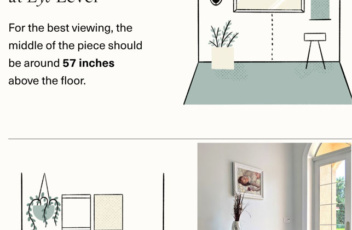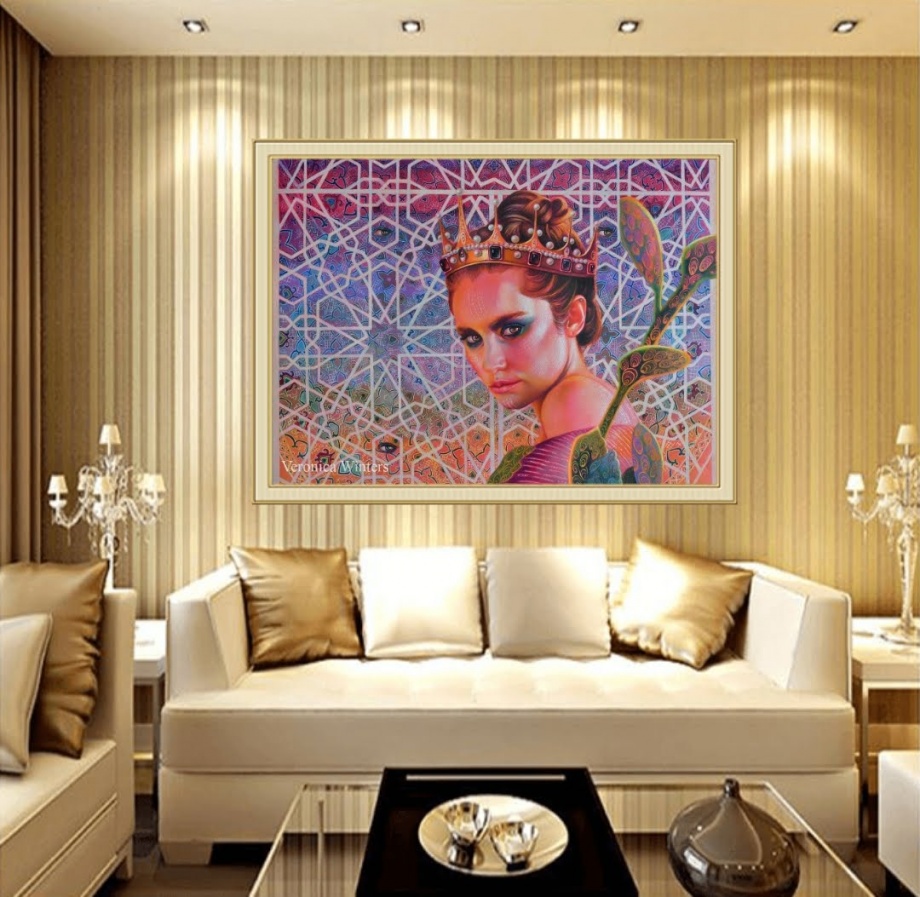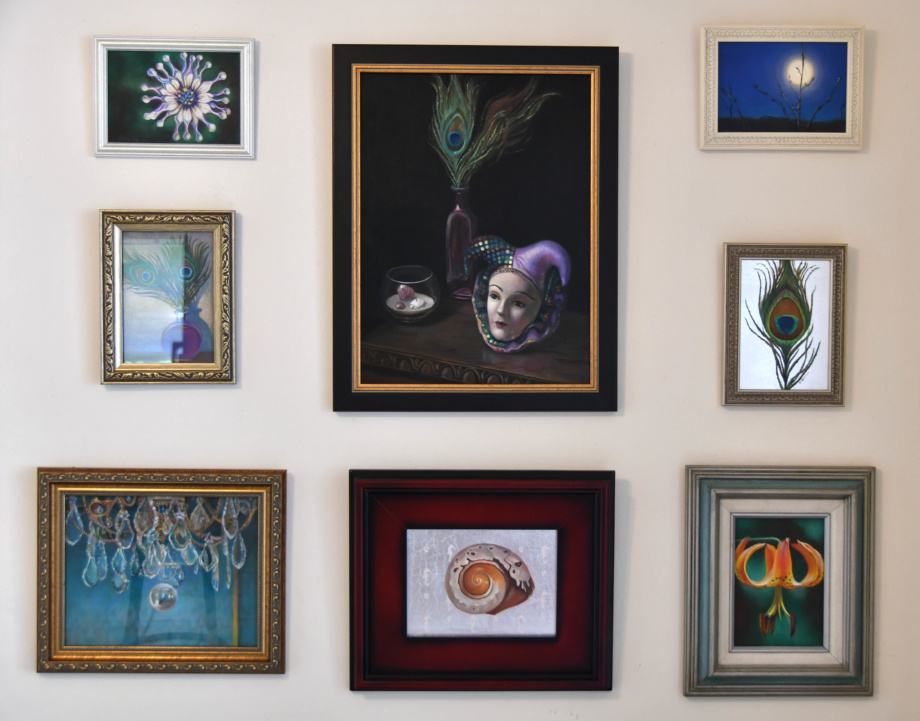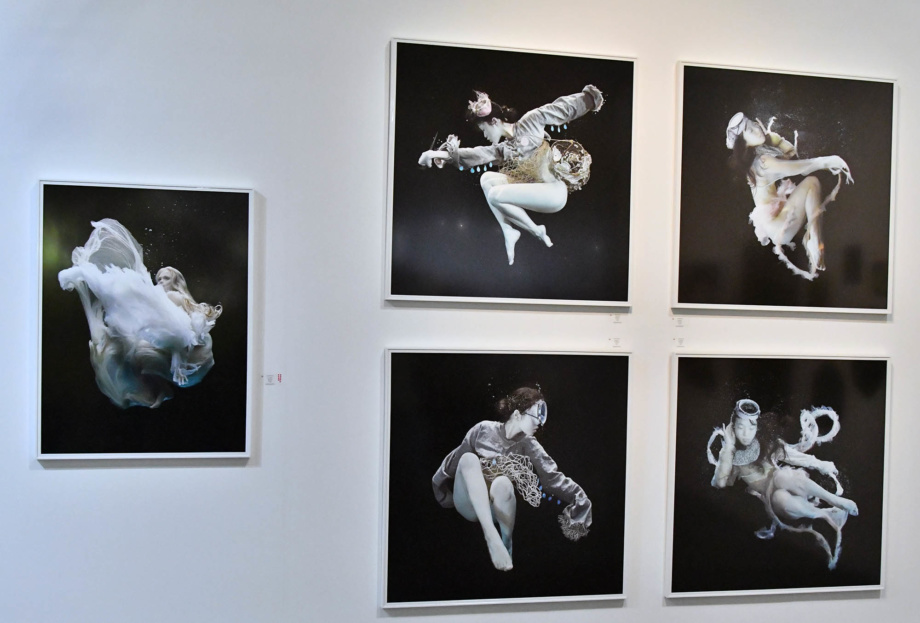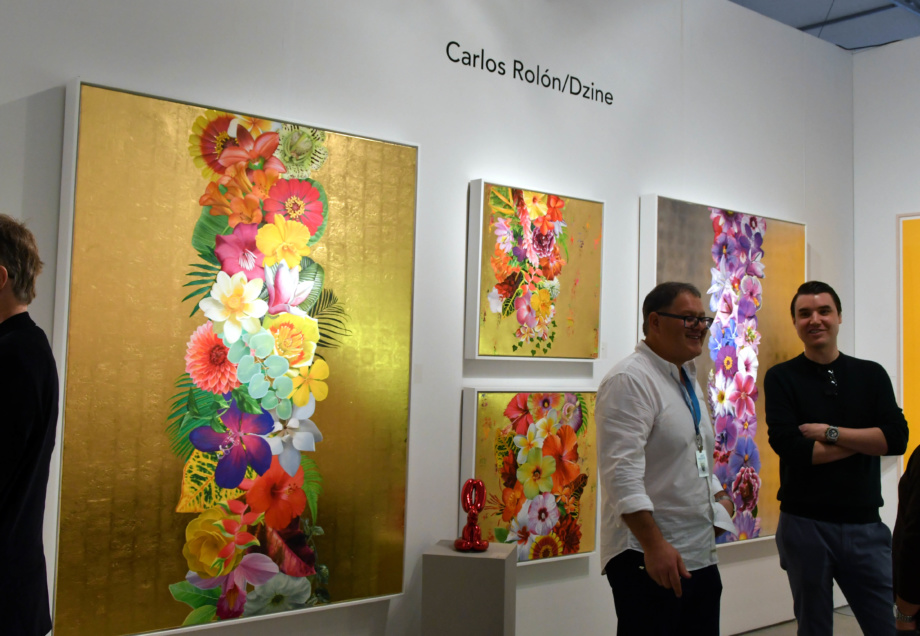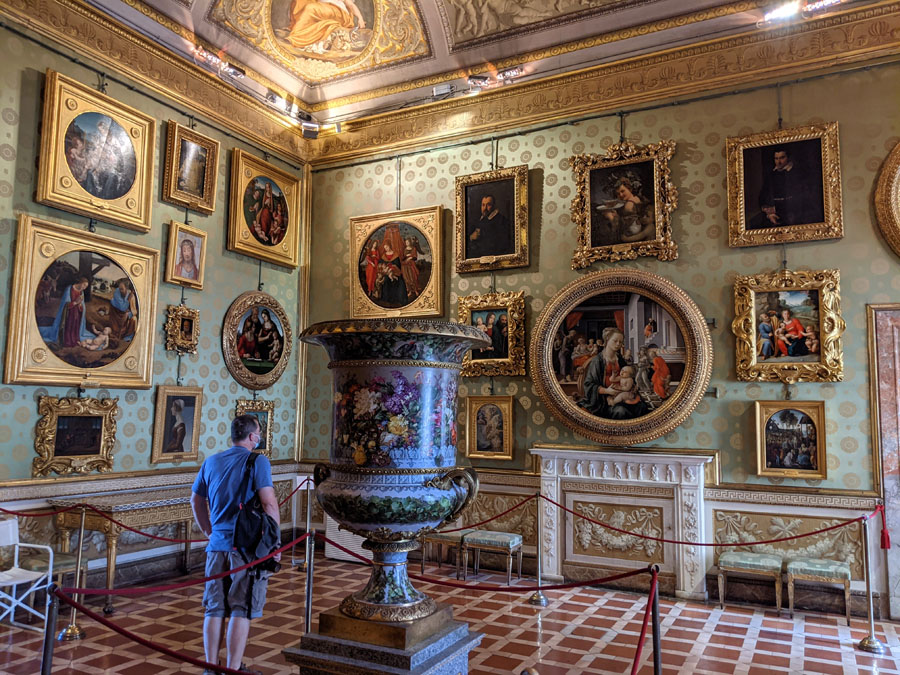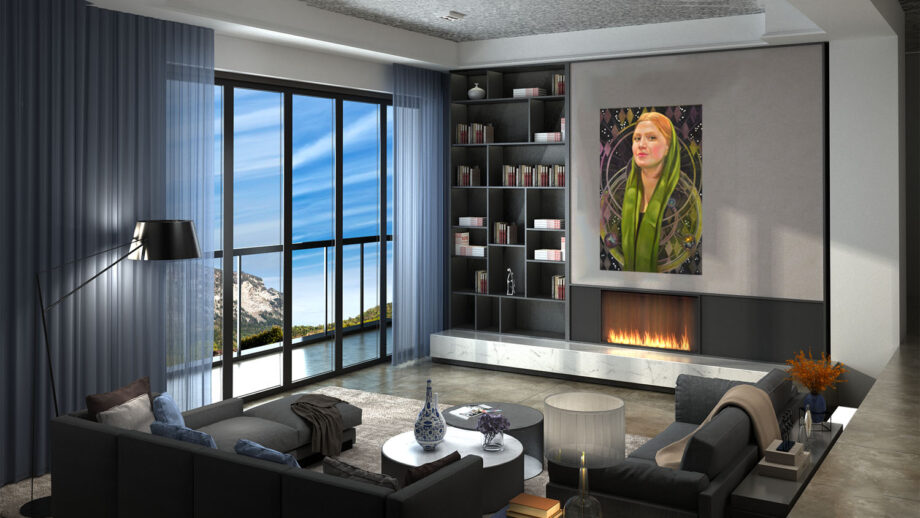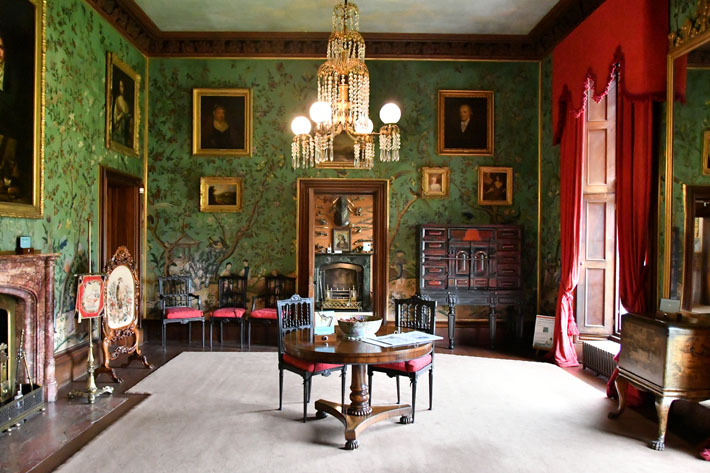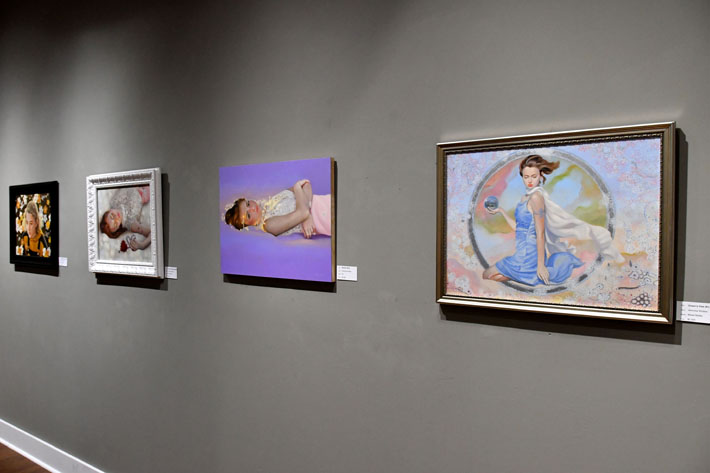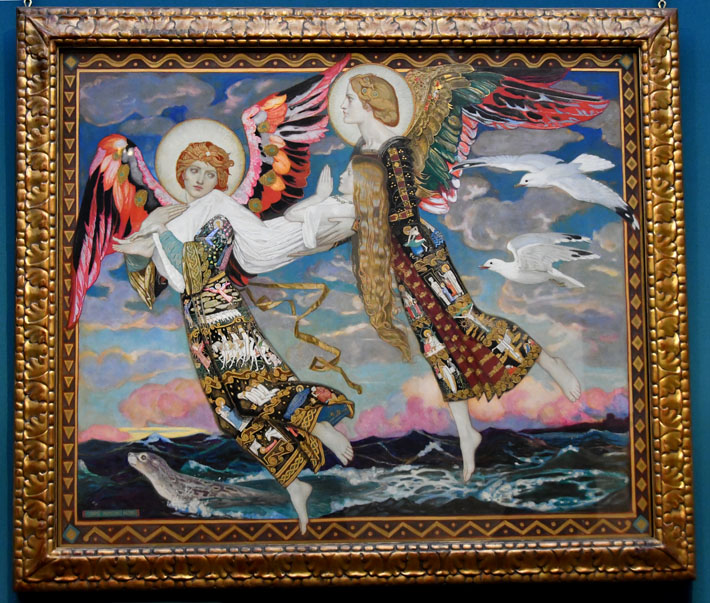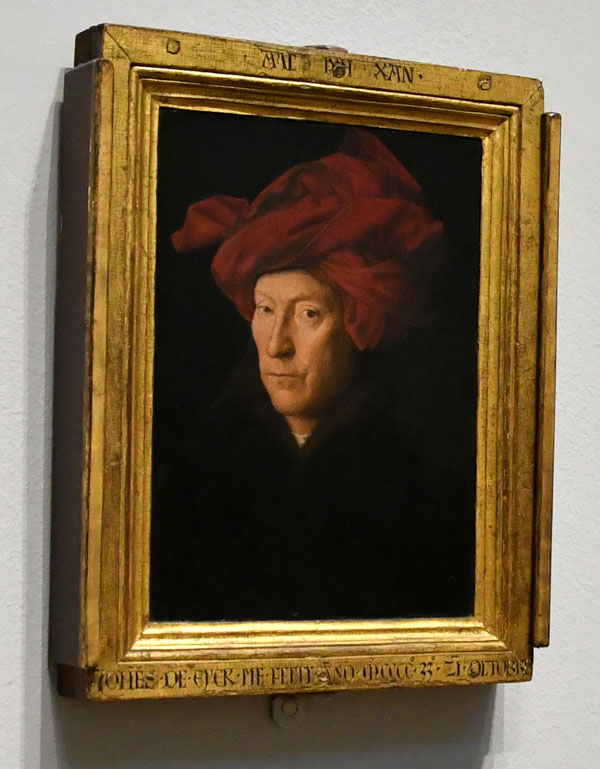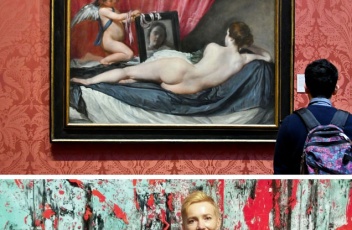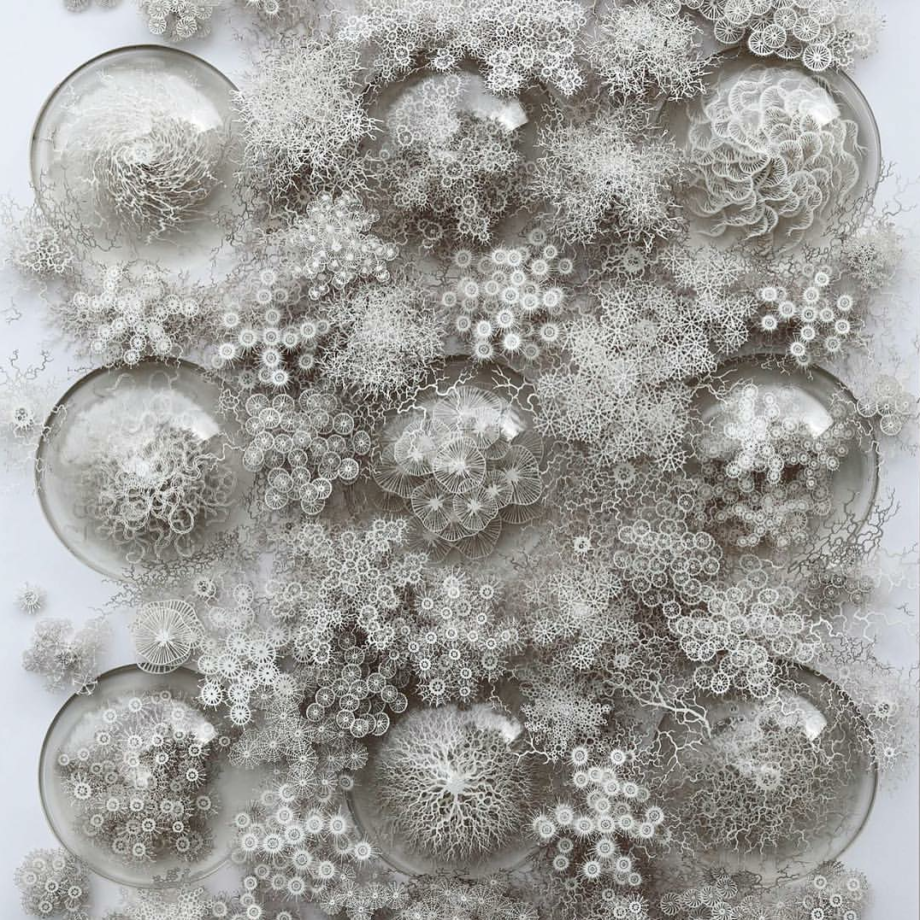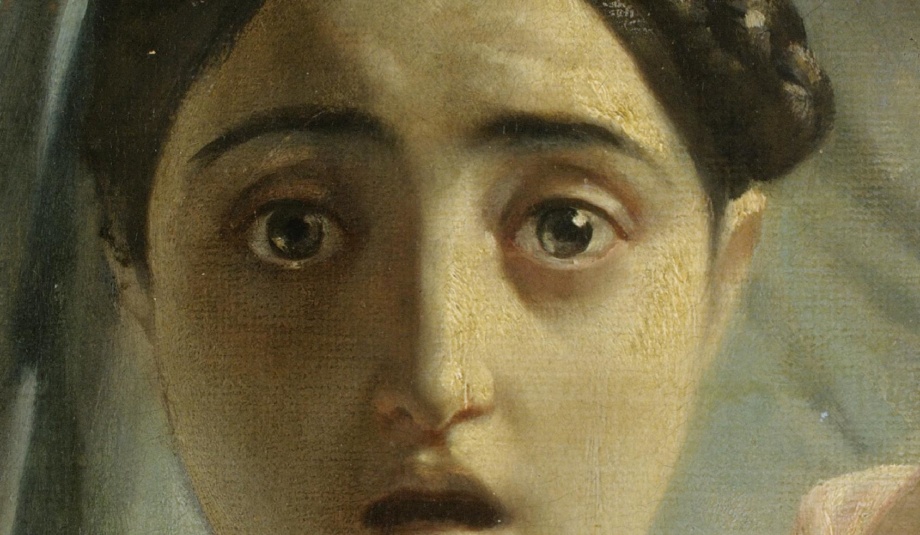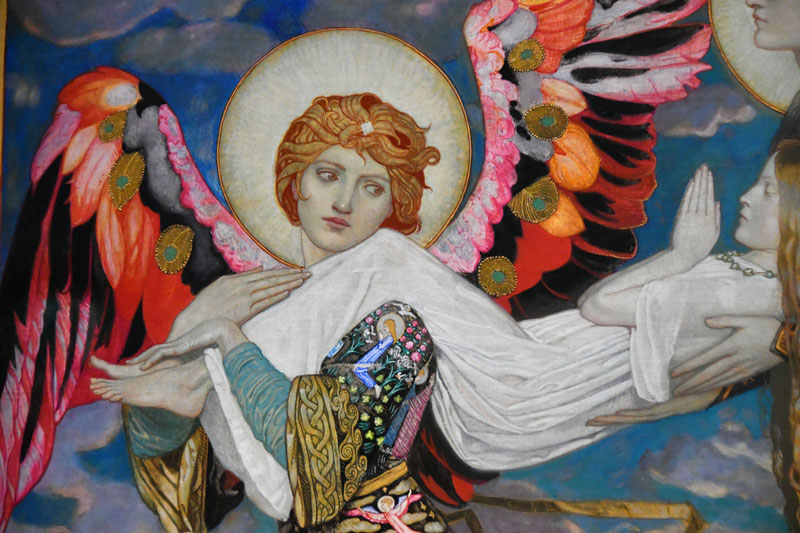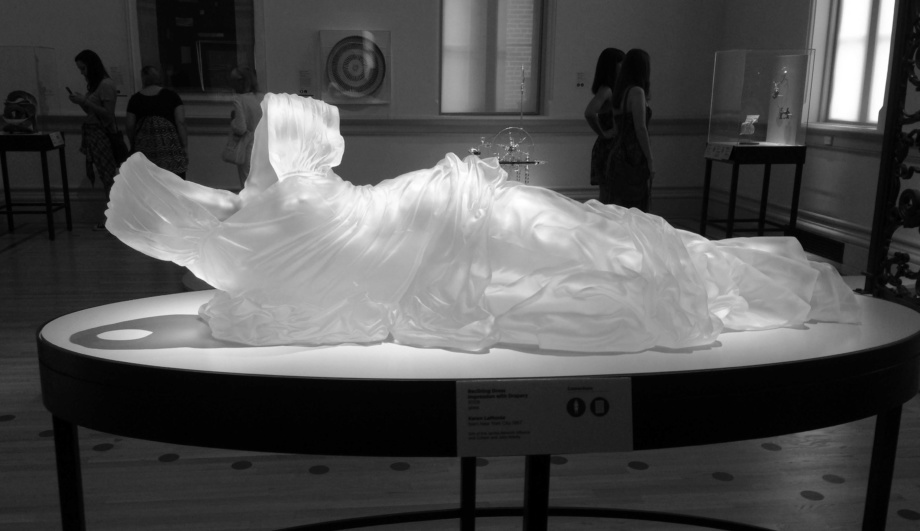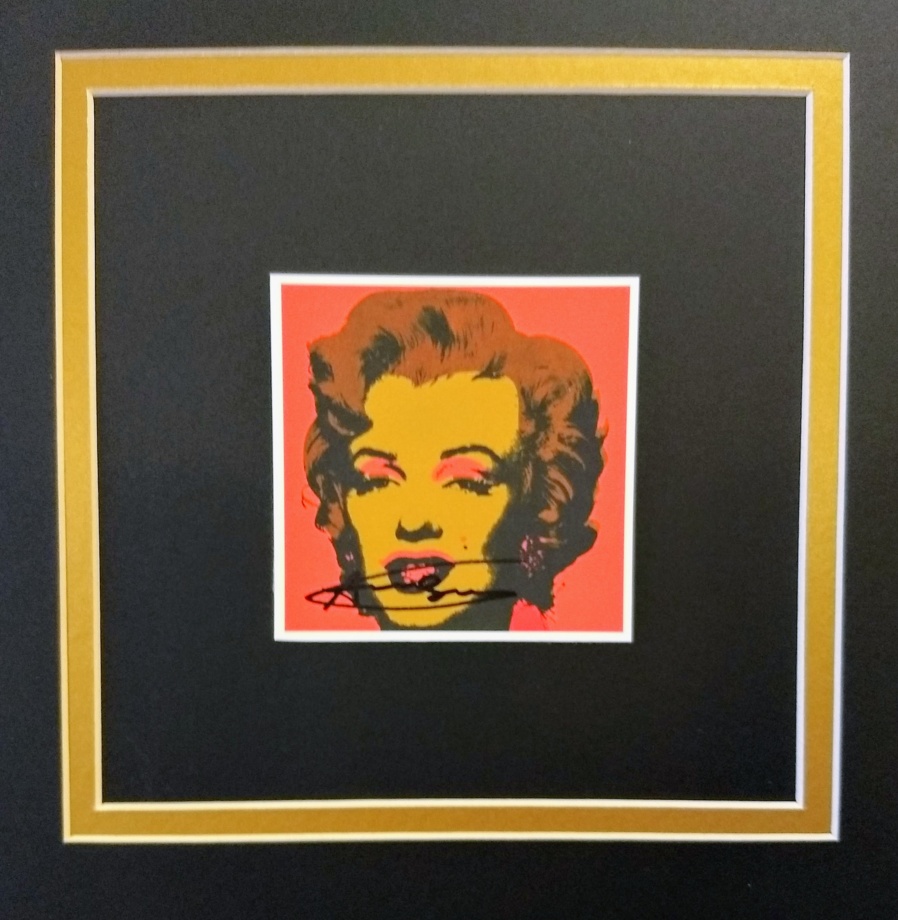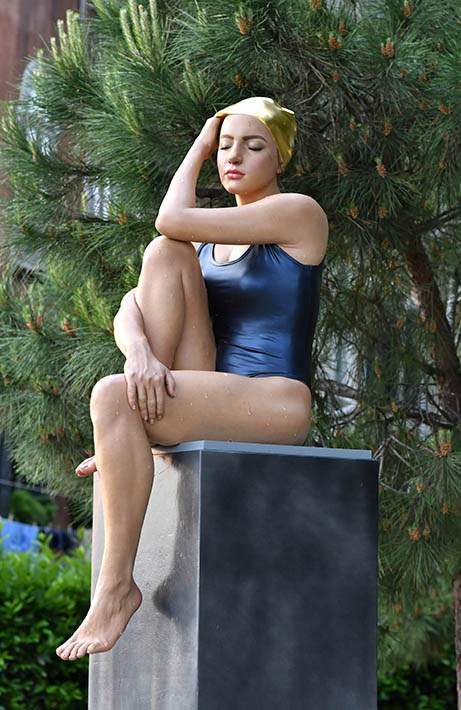Whether it’s your own work, a cherished gift, or an important purchase, a piece of art is one of the best ways to personalize your space. However, deciding where to place art and the best way to hang up a painting can be challenging. Thankfully, there are several rules of thumb to guide you. The following tips, along with 1stDibs’ illustrated advice on how to arrange wall art, will help you decide the perfect ways to exhibit art in your home.
1. Where to Hang Art
Small pieces look lost and awkward when placed alone on expansive walls. If you have a large wall to fill, consider finding larger works that make a statement. Alternatively, you can pair multiple small pieces together in a grid setup or gallery wall to help fill the space.
Other ways to display art include propping them up on a mantelpiece or floating shelf. This approach allows you to easily move pieces around without damaging the wall.
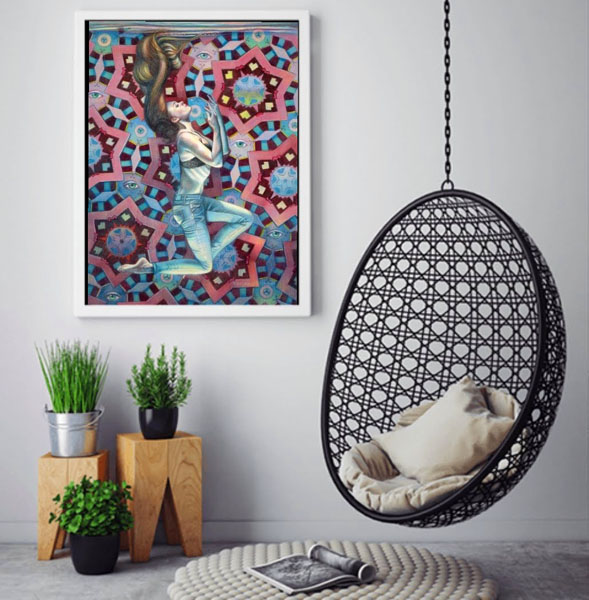
2. Plan your art wall display
One of the best things you can do before hanging wall art is to make a solid plan. There are several great methods of envisioning pieces on a wall before hanging them up.
First, you can try out art visualizer tools and interior decorating apps on your phone that use augmented reality to show you how a painting will look on your wall. This will not only help determine the best placement for an art piece, but will also show you how the colors will either complement or clash with your existing decor. There are lots of these digital tools out there, so you can search through the app store to find the best one for your needs.
Second, you can try using kraft paper to plan an arrangement. To do this, cut out kraft paper pieces that are the same sizes as all your art pieces. Adhere the pieces of paper to the wall with painter’s tape to find an arrangement that you like. This is also a great way to experiment with spacing between pieces before you hang them up.
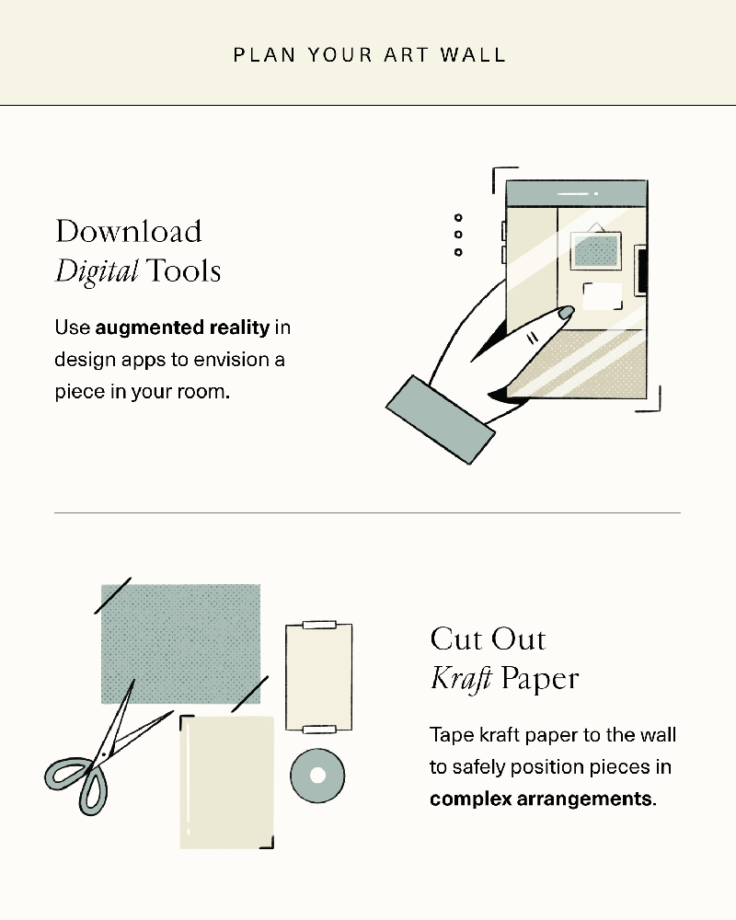
3. Measure your wall space, furniture & art
Spacing out art and deciding on the best height to hang pieces is sometimes a matter of intuition. However, if you’re unsure where to start, here are some suggestions.
Hang art so that the middle of the piece sits at eye level, around 57 to 60 inches above the floor. This way, people walking by will get the best possible viewing experience and won’t have to strain to see the work.
When hanging art right above a piece of furniture, such as a sofa or console table, it’s aesthetically pleasing to keep the width of the furniture wider than the art above it. A general rule is to keep art above a sofa ⅔ the width of the sofa.
What about spacing in between multiple art pieces on a wall? In general, it’s a good idea to leave anywhere from 3 to 6 inches in between the pieces.
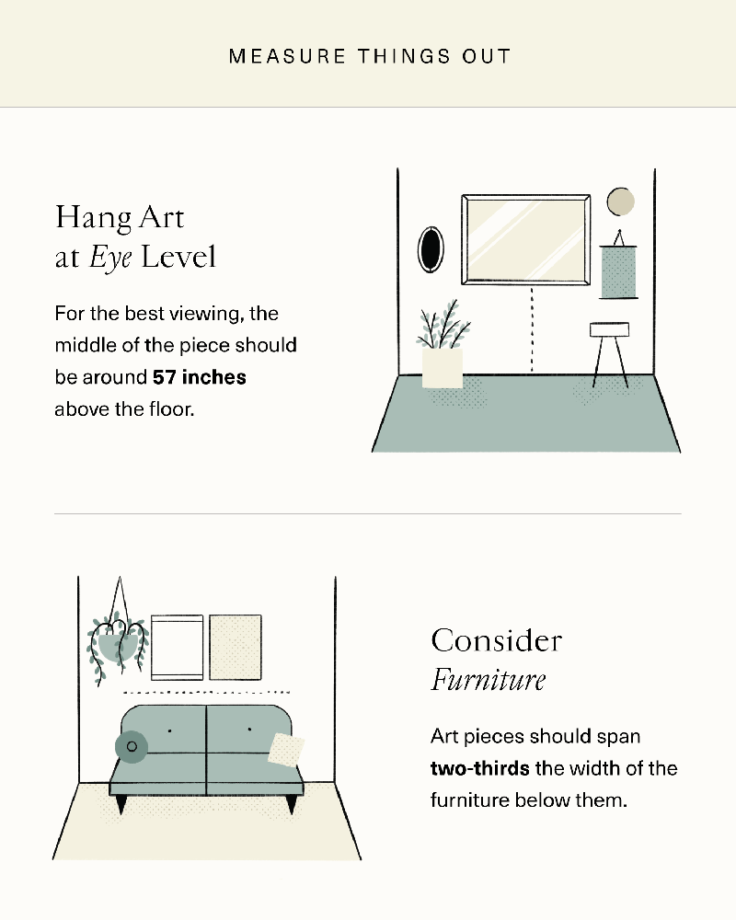
4. Decide on either Symmetrical or Asymmetrical wall art display
When planning an art display with multiple pieces, it’s important to ask yourself if the room would be better suited to an asymmetrical or symmetrical arrangement.
For a tidy, traditional-looking display, choose a symmetrical layout such as a grid, diptych, or triptych of identically-sized pieces.
For a more diverse feel, put together an asymmetrical, salon-style gallery wall. In a gallery wall, you can pair different sizes and styles, but it’s best to maintain cohesion by keeping a running theme or repeating color palette.
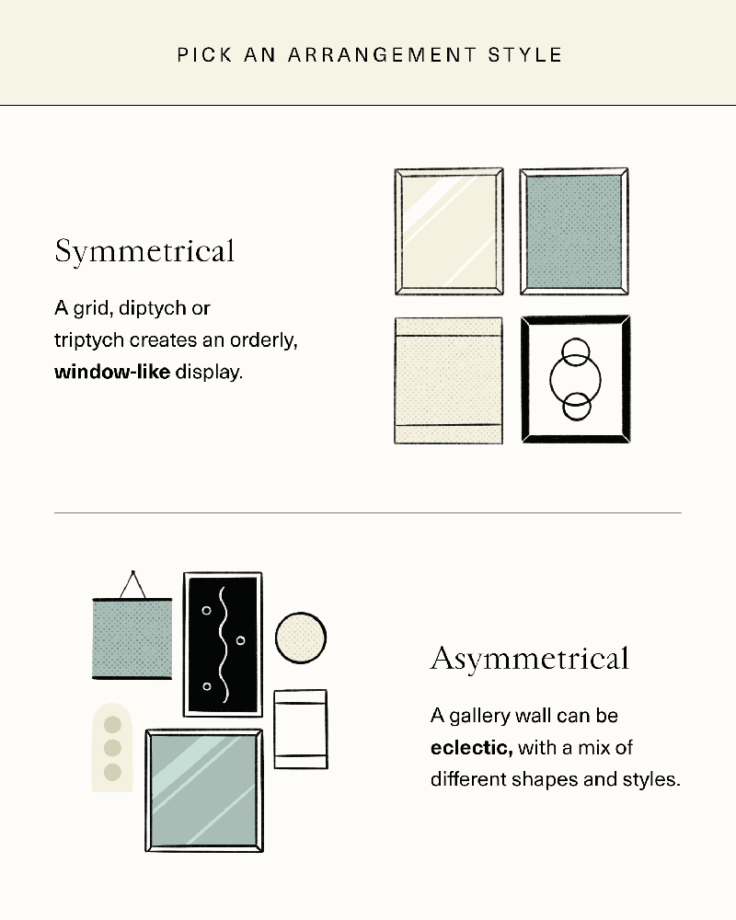
5. Create visual balance
In the aforementioned gallery wall setup, how do you keep everything visually balanced?
A great way to start is to hang up the largest pieces first. Put up a large art piece near the center of the wall to draw the eye to a focal point. Then, hang the smaller pieces around it to create visual interest.
Another approach is to imagine an invisible line down the center of the wall. When you hang up your art, keep the same visual weight of pieces, large and small, on both sides of the line. This way, you’ll ensure the wall stays balanced and unified.
Finally, if you’re lining up different-sized works horizontally, align the centers, not the tops or bottoms of the pieces.
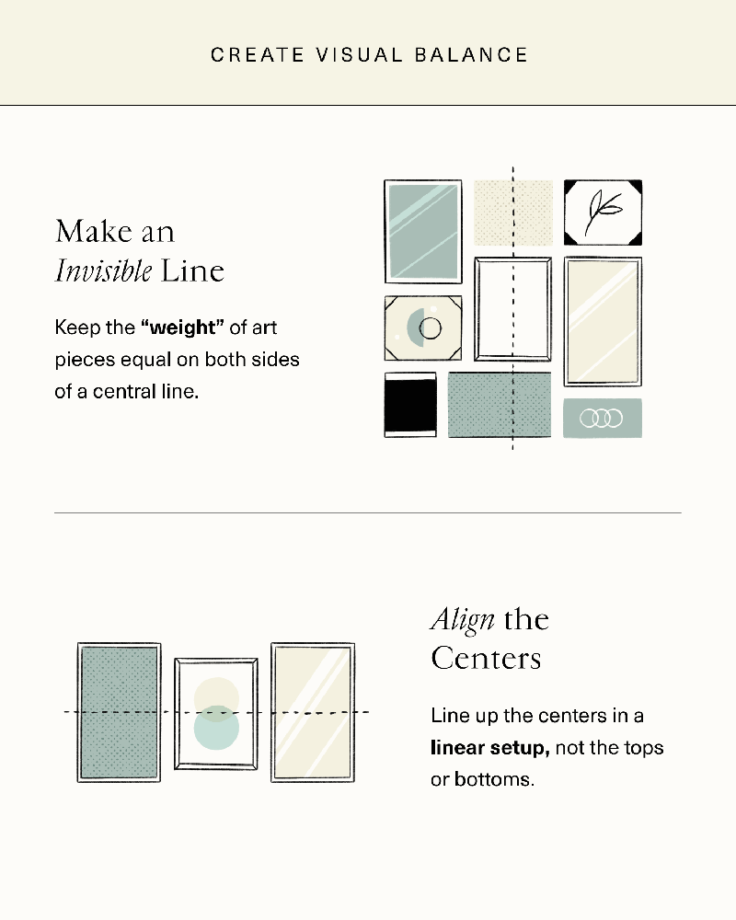
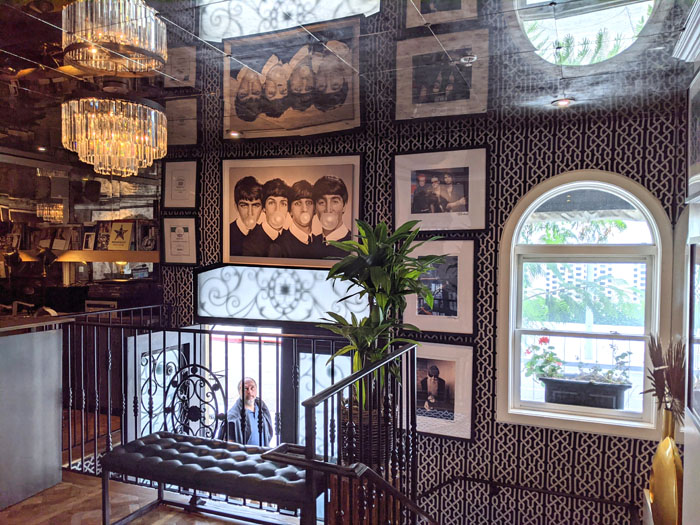
6. Experiment with the layout on the floor
If you have no visualization apps, place your arrangement on the floor first to see how art pieces harmonize together in size, theme and color. I often collect pictures of my favorite wall art displays in a digital folder. Some art arrangements include more than art, such as decorative mirrors and metal sculptures. Experiment!
These tips will help you get started creating a beautiful art arrangement that will enhance your home and make for a visually pleasing display. That said, showcasing art is all about creativity, so feel free to break the rules and follow your instinct whenever it feels right.
You can also see other wall art designs and ideas here: https://porch.com/advice/design-best-gallery-home
Check out visionary art for sale
Further reading: https://veronicasart.com/art-collecting-101-6-ways-to-display-art-beautifully-at-home-office/
